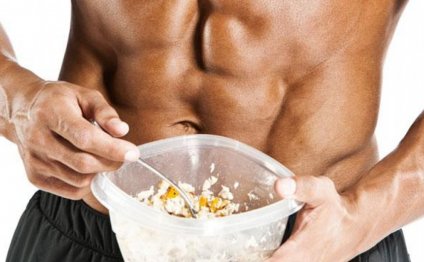
Muscle and Nutrition
 The way our hormones respond to training, and how they affect our muscle growth, depends a lot on our nutritional status — not just how many calories we’re taking in.
The way our hormones respond to training, and how they affect our muscle growth, depends a lot on our nutritional status — not just how many calories we’re taking in.
What is muscle growth?
Muscle growth — sometimes known as hypertrophy — is the development of mass, density, shape, and function of muscle cells. This adaptation allows the muscle to meet exercise/function-induced stress.
Muscle cells are sort of like a bunch of sticks bundled up for firewood. Myofibrils (“myo”, from the Greek mys, refers to muscle) are cylindrical bundles of filaments composed of sarcomeres. Sarcomeres are the fundamental unit of muscle contraction and are composed of myosin and actin.
 All of these proteins comprise about 20% of muscle. Water, phosphates, and minerals comprise the other 80% of muscle.
All of these proteins comprise about 20% of muscle. Water, phosphates, and minerals comprise the other 80% of muscle.
Where does muscle growth come from?
When someone does resistance training consistently, they may notice muscle growth. The growth is due to an increased water, number of myofibrils, and connective tissue.
Scientists often break hypertrophy down into two types:
- Sarcoplasmic hypertrophy increases muscle size by increasing the volume of sarcoplasmic fluid in the muscle cell.
- Myofibrillar hypertrophy (sometimes called “functional hypertrophy”) increases muscle size by increasing the contractile proteins.
Some people in the fitness industry will argue that bodybuilders demonstrate sarcoplasmic hypertrophy, and that their muscles look “puffy”; while weightlifters demonstrate myofibrillar hypertrophy, and their muscles are “denser”.
| Bodybuilder | Weightlifter |
Muscle growth and fiber types
 Although growth can occur in all muscle fibre types, different types of muscle fibres vary in their potential for growth. Fast twitch fibres are more likely than slow-twitch fibres to grow with intense strength training. This may be one reason why athletes such as sprinters tend to be bigger and more muscular than endurance athletes, and why heavier loads tend to stimulate more muscle growth than light loads.
Although growth can occur in all muscle fibre types, different types of muscle fibres vary in their potential for growth. Fast twitch fibres are more likely than slow-twitch fibres to grow with intense strength training. This may be one reason why athletes such as sprinters tend to be bigger and more muscular than endurance athletes, and why heavier loads tend to stimulate more muscle growth than light loads.
Muscle growth and hormones
Muscle growth is further influenced by type of exercise, nutritional intake, and hormonal status. The type of exercise and hormonal status influence nutrient partitioning — in other words, whether you increase muscle depends on the kind of activity you do and your hormonal environment, which both tell your body where to allocate the nutrients you eat.
Eat a lot, train hard, and get lots of recovery, and you’ll put on muscle. Be malnourished, be sedentary, and be stressed out — and you won’t.
Hormones that modulate muscle growth include:
- growth hormone
- testosterone
- IGF-1
- cortisol
- beta-endorphin, and
- parathyroid hormone.


INTERESTING VIDEO



Share this Post
Related posts
Muscle and Fitness
Behind the Scenes at Dave Bautistas Cover Shoot | Muscle Fitness
Read MoreMuscle and Fitness online
Package Specials: PT/Master Trainer · PT/Pilates Instructor · PT/Sports Nutritionist Only $119.95 for 2 courses Fast, Convenient…
Read More









